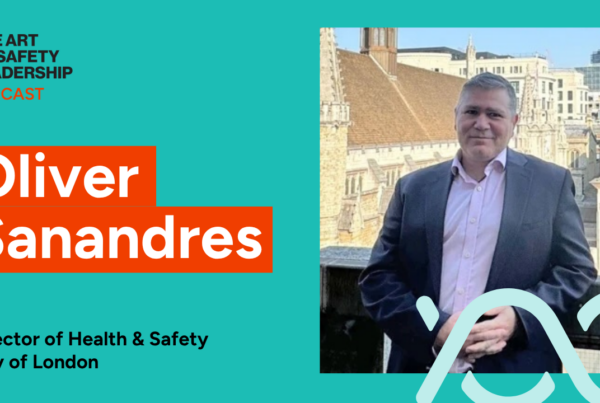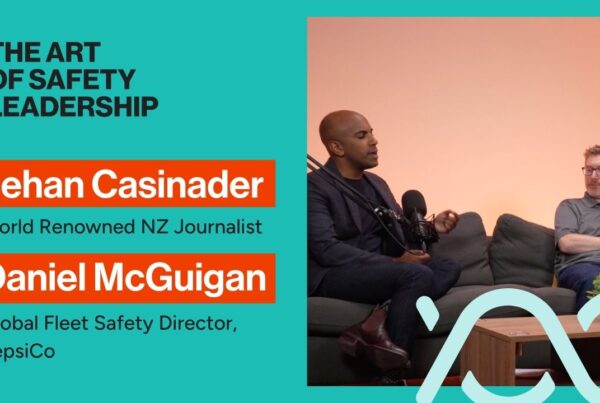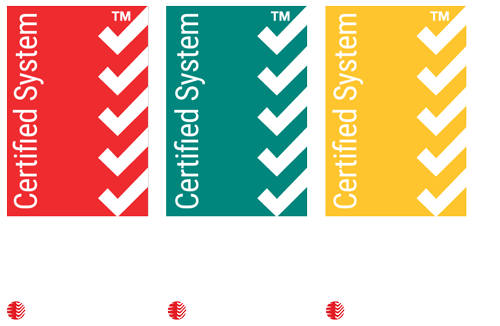One of the biggest challenges facing the health and safety industry is that in many cases we’re plateauing out. The International Labour Organisation stats indicate workplace fatal accidents have remained around 2.3 million annually since 2010; couple this with an increasing prevalence of psychosocial risks and the net improvements for businesses is becoming slim. (International Labour Organization, 2023)
As we reflect on the static safety statistics in developed nations over the past 20 years, we need to get more granular on why we’re not seeing further improvements. Does the answer lie in doing the same thing we’ve been doing for the last 70 years – imposing more regulations and compliance criteria dn issuing more international safety standards? Or, accepting regulations have a role to play, is fresh thinking, new energy and a data-driven approach also required to achieve that next level of improvement?
Have we asked too much of health and safety legislation?
Today’s health and safety legislation has been shaped in response to incidents that have happened in the past and has continued to evolve in an effort to improve health and safety outcomes. As health and safety systems have harmonised and improved, more research has been carried out and international standards have come into play, we’ve seen a continuous evolution of regulations getting more specific and targeting some of the key areas of harm which has done a great job at trying to cut out the lower end issues that are unacceptable.
They have raised the tide of safety standards across the western world, particularly in the United States, Commonwealth countries and democratic systems that are regulatory based. But in the last 10 to 20 years what has been observed is a plateau effect where there are more and more regulations coming in, but less and less impact being made on harm reduction.
Regulations set the floor
Current legal obligations and compliance measures, set an important minimum bar, and are failing to effectively drive a culture of continual improvement in workplace health and safety.
There’s a widely-held assumption that if a business meets its health and safety legal obligations it should equate to the presence of safety. But that’s simply not the case.
Harm is still occurring even though organisations might be compliant from a regulatory perspective. And that’s because regulations are set at the minimum standard that people need to adhere to in order to protect their workers. This lowest viable level, or what is minimum compliance, makes it achievable for businesses to comply en masse.
In determining what is the regulatory minimum, regulators must balance public, economic, political and business interests, and there are inevitable tensions that regulators must weigh up. While they may want to set higher standards for some parts of the sector, it would be difficult for businesses to comply en masse. For example those standards may have a negative effect on another part of the economy.
Regulation alone also has its limitations. It can fail to provide sufficient guidance, thinking and direction on the human aspects of safety practice, how and where we need to innovate or lean into leadership above process. The attitudes, mindsets and beliefs that are needed to ensure consistent execution and the individual ability to understand risk can’t come from regulatory guidance.
We saw this clearly demonstrated in our Insights Report released earlier this year. The Report revealed that 81% of safety culture elements measured across 2,300 organisations scored only a Tier Three, commonly aligned to compliance requirements. The middle-of-the-road performance suggests that while basic systems and processes are in place, there’s a significant gap in proactive behaviours and engagement. That could indicate that, on the whole, compliance has been one of the driving factors for investment and effectively setting the default standard for health and safety performance. Just 7.6% of elements sit at Tier Four which shows indicators of proactive maturity.
The findings underscore the need for leadership to go beyond merely meeting regulatory standards and to actively engage in promoting a culture where safety is ingrained in everyday practices. Compliance requirements and the systems and processes it drives form an important foundational part of culture, but the presence of true safety culture goes beyond this to include the reality of how those systems and processes are implemented, to what success, and the essential leadership ingredients that must be demonstrated to foster that engagement, commitment and advocacy amongst every member for the organisation. Compliance alone is not enough, we need to shift towards a proactive safety culture where preventing harm is the primary goal, not compliance.
Regulatory reporting still heavily reliant on lagging safety performance indicators
Organistions have traditionally relied on audit and verification to demonstrate that they’re complying with regulations whilst using lagging safety indicators to define performance. Lagging data, things like Lost Time Injury Frequency Rate (LTIFR), fatality rates, and severe injury rates, have been good at lifting the bar and compared to pre-industrial data there’s certainly a marked decrease in harm. However, lagging data only tells part of the story of an organisations safety performance.
History is littered with examples of organisations that ticked all the compliance boxes and had a good track record, but the next incident was catastrophic. Track record means little. More important is what organisations are doing to prepare for tomorrow.
And that’s where leading safety indicators come into play. Having a picture of this data allows organisations to understand if the things they’re doing to prevent harm are actually making a difference.
Building a fuller picture of actual safety performance, including leading data on near misses, strengths across the safety management system, and actions being taken proactively to reduce risk is critical to providing assurance to decision makers. Most leading safety organisations will openly discuss the challenges they are experiencing with near-miss data, and are constantly vigilant to reducing risk knowing how close they may come to more severe incidents and injuries, which wouldn’t be apparent by focusing purely on lag data. To only provide the lag data to a Board is telling them half a story, moving onto the next agenda item without revealing a potentially dramatic plot twist.
The fear of prosecution drives behaviour
Regulations can drive investment in health and safety to a certain point, but stifle it beyond that. While compliance results in adherence to standards and criteria, all too often efforts are reduced to simply a compliance mindset to satisfy regulators. We know that globally, businesses and health and safety practitioners have seen the threat of prosecution for non-compliance as the more clear and apparent risk to their business, so that’s set their target, creating a focus on legal compliance and making sure those boxes are ticked.
As a result of this, the range of factors we measure and evaluate beyond this can be overlooked. It has framed the expectations of Board Members and business leaders to expect compliance, and once it is achieved, attention can be placed elsewhere in the business to drive performance and maximise value. For many safety professionals also, it has provided the benchmark for their performance expectations. What we have observed though is that safety performance and business performance are intrinsically linked; reducing harm for workers and customers generated a range of externalities across commercial, social, and legal spheres that increase the value of the organisation. Amongst the top global organisations, clever Directors, Executives and Safety Professionals have recognised and capitalised on this relationship, but it remains elusive for many organisations to break free of the anchor to compliance and release the untapped value of proactive and leading safety cultures.
What can we do beyond regulation to drive proactive safety culture?
Given how anchored we are to regulation and how significant an impact it has on health and safety practice, does regulation need to play a role in driving change?
Compliance requirements and the systems and processes they drive form an important, foundational part of safety culture. While regulations clearly have their place and have helped raise the tide to an average systemic safety culture across many countries, industries and sectors, is it time to explore some more novel public policy approaches and ways to incentivise proactive safety culture? There is always a place to focus on high risk sectors, there could be greater recognition and support for high performing sectors that move beyond viewing risk through a regulatory lens and embed proactive safety culture practices.
Innovative policy approaches that leverage business incentives to improve worker safety
Regulators could take a more innovative policy approach to encourage organisations to go beyond the minimum standard and invest in their safety culture maturity. We know there are areas of strategic alignment between regulators, who aim to prevent harm, and insurers, who aim to reduce cost of claims in a scheme and maintain sustainability in insurance pools.
There are opportunities for innovative policy collaboration in this space, and drawing on shared objectives. When we consider how these systems are currently set up, there are opportunities for regulators and their inspectors to not only focus on the negative side of safety performance when working in the field with businesses, but to also identify and recognise the strengths of businesses that are doing some things very well. Collecting this data, and feeding into the system for future policy and performance decisions could potentially be a gamechanger. Particularly when we know the current data relating to non-conformance can conversely inform regulatory responses, and influence financial aspects such as sector based and uniformed insurance premiums.
This approach not only aims to reduce harm, but also maximises economic benefits, as a stronger, safer workforce brings numerous advantages. For example, the adoption of a proactive safety mindset, supported by appropriate insurance incentives, could lead to significant improvements in workplace safety.
Uniform insurance premiums are not helpful. They don’t differentiate between companies that practice good health and safety and those that don’t. You can have two businesses in the same industry, one business who goes above and beyond and one who is very reactive but they pay the same insurance premium regardless of their safety culture maturity and level of harm.
Insurance companies could do more, such as offering companies with a robust health and safety culture lower premiums or discounts on their excess payments. This is something that Safe365 is currently discussing with leaders in the insurance industry.
Safe365 is an advocate for the wider use of insurance models where companies demonstrating proactive safety measures, for example better loss performing ratios, benefit from lower commercial terms.
Change the narrative of what safety compliance is measured against
Rather than focusing on traditional lagging metrics to validate compliance, regulators could look to showcase the true cost of harm and the business case that exists to both reduce harm and improve business efficiency.
As safety leaders, we don’t currently talk about safety in the same way that every other leader in an organisation is measured. We turn up with pages and pages of lagging safety data, but if we want to evolve the engagement of boards and executives over and above the “we should be doing x”, or the threat of fines or prosecution for non-compliance, we need to provide a much more commercial argument to prove the potential impact and the return on investment it can provide to businesses.
Crystal Danbury, Senior Safety Leader in Safety Insurance and Wellbeing, talks in depth about bridging the gap between safety language and business language to elevate the understanding of safety’s impact on business performance and business success on our recent webinar.
Promote what better practice looks like
Regulatory compliance can have a normative effect, particularly when it’s coupled with low director and management appreciation for the benefit of exceeding those minimum regulatory standards and tapping into the value associated with more proactive safety culture. For regulators, there are opportunities to consider using the power of social norms by showcasing what good looks like and where sectors are operating at a higher standard. And the reason it works is because it taps into the innate competitiveness in human behaviour. Showcasing good practices [link to benchmarking blog] and what can be achieved when health and safety is done well will drag others in the sector to a higher level.
Emerging areas of focus
More recently, regulators have started to shift their focus and there are two areas where we’re seeing rapid change and development.
Firstly is the application of significant punishments for safety non-compliance that really transitions it out of the workplace context and into a criminal offense, for example industrial manslaughter. This approach is targeted at the real laggards in the system who are being negligent in their response to health and safety legislation.
The other area is psychosocial risks. The regulatory focus for the last 70 years has really been on physical health and safety, however there is growing recognition that mental health is equally important, and has a significant economic impact, which is driving the regulatory response and the need for businesses to improve their performance. In the United Kingdom alone, 17 million working days were lost in 2021 due to stress, anxiety and depression (HSE.gov.uk) and mental health cost £105B in 2021, accounting for 23% of the total disease burden in the UK (NHS 2020). The next wave of regulations based on international standards provide a consistent framework and approach. It’s a good step for the future and sets a new minimum standard which is important. But it’s equally important that organisations don’t just aim for compliance. Recognising the shift in focus, Safe365 has recently launched a sister business, OrgWell365, that makes psychological risk management simple.
For these emerging areas of focus, we return to the beginning of a regulatory journey. For many businesses, it serves as a positive to attracting their attention and investment to meet the regulations. Though as we have discussed and observed for physical health and safety regulation, as these become normalised and compliance is achieved for businesses, they should avoid the temptation of resting on their compliant laurels, and continue striving for better outcomes and further reductions in harm than regulations alone can achieve.
At the end of the day, regulations are important, but they’re not infallible.
While compliance requirements and the systems and processes they drive form the foundation of safety culture, they alone aren’t sufficient to create truly safe workplaces. We need to shift attitudes and help inspire leaders to strive beyond compliance, rather than resting on it and enable them to deliver greater value to their organisations, not just in harm reduction, but unlocking the financial, social and sustainability benefits that come from putting workers at the centre of their thinking.
Do you feel we rely to heavily on regulation? Share your insights with us in the Safety Leaders’ Forum on LinkedIn.
 About Anthony Bradstreet
About Anthony Bradstreet
For over a decade, Anthony has been supporting organisations to better understand, apply and measure risk, health and safety across geographies, sectors and business units. As Safe365’s Chief Customer Officer, Anthony ensures Safe365 customers get the best experience to improve and unlock the power of our health and safety technology.






